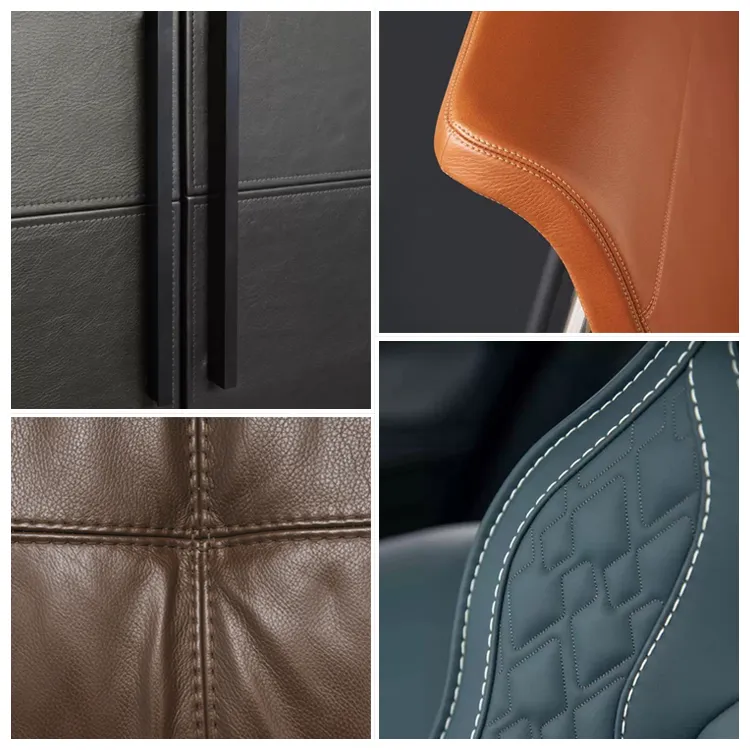sewing thick material
Sewing Thick Material Tips and Techniques for Success
Sewing thick materials can be daunting for both beginners and experienced sewists. Whether you're working with heavy fabrics like canvas, denim, upholstery, or leather, mastering the art of sewing thick material takes some preparation and the right techniques. In this article, we will explore essential tips and tricks to help you tackle thick fabrics with confidence and ease.
Choosing the Right Tools
One of the first steps in sewing thick material is ensuring you have the appropriate tools. A standard sewing machine may struggle with heavy fabrics, so consider using a heavy-duty machine or one specifically designed to sew through thick layers. These machines typically have a stronger motor, allowing them to handle the additional weight and resistance offered by thick materials.
When it comes to needles, always opt for a heavy-duty needle, such as a size 90/14 or even larger. Heavy-duty needles are designed to penetrate thick fabrics without bending or breaking. If you're sewing leather or another particularly dense material, a specialized leather needle will make a significant difference in your sewing experience.
Another crucial tool is the presser foot. A walking foot or a Teflon foot can help maintain even feeding of the layers through your machine. This is especially important when working with slippery fabrics or when you have multiple layers that can shift during sewing.
Preparing Your Fabric
Before sewing, it's essential to prepare your thick material properly. Start by prewashing the fabric if possible, as this can help remove any sizing or finish that could affect the sewing process. Iron the fabric to eliminate wrinkles, which might create uneven seams and affect the final look of your project.
When cutting thick fabric, use sharp scissors or a rotary cutter to ensure clean edges. Mark your cutting lines with tailor’s chalk or fabric markers, as ordinary markers may not show well on darker, thicker fabrics. Take your time and cut accurately; mistakes can be harder to fix on thick materials.
sewing thick material

Mastering the Sewing Techniques
When sewing thick materials, patience is key. Take your time and be gentle with your machine. Start with a slow sewing speed to retain control over the fabric. Gradually increase the speed as you become more comfortable with how the material feeds through the machine.
For seams, always use a longer stitch length compared to regular fabric. A 3.5 or 4.0 mm stitch length will help prevent the stitches from breaking or sinking into the fabric. If you're sewing layers together, consider basting them before sewing to maintain alignment. Basting stitches are temporary and can be easily removed after sewing, ensuring your seams are straight and secure.
When sewing bulky seams, such as those found in hems or seams with multiple layers, you may encounter challenges with fabric feeding. To combat this, you can use a hump jumper or a piece of scrap fabric under the foot to create a more even height. This will assist in feeding the fabric smoothly over the thickness, preventing uneven stitches.
Finishing Techniques
Finishing your seams becomes crucial when working with thick materials as raw edges can fray and ruin the look of your project. Consider using a serger to finish seams or apply bias tape to edges for a clean finish. You can also use a zigzag stitch on the raw edges to prevent fraying.
In addition, topstitching can add a professional touch to your projects. It not only reinforces seams but also adds a decorative element, enhancing the overall design of the work. When topstitching thick fabrics, it may be beneficial to use a larger needle and higher quality thread to ensure durability and aesthetics.
Conclusion
Sewing thick materials can be challenging, but with the right tools, preparation, and techniques, it can also be incredibly rewarding. Whether creating durable outdoor gear, fashionable denim jeans, or sturdy upholstery for your home, applying these tips will enhance your sewing experience. Remember, practice makes perfect. Start with smaller projects to build your confidence and skills before moving on to larger endeavors. With every stitch, you'll become more comfortable tackling thick fabrics and enjoy the art of sewing even more. Happy sewing!
-
Heavy Duty Leather Sewing Machine: A Must-Have for Professional LeatherworkNewsMay.28,2025
-
Leather Sewing Machine: Essential for High-Quality LeathercraftNewsMay.28,2025
-
Extra Heavy Duty Sewing Machine for Premium Leather ApplicationsNewsMay.28,2025
-
Walking Foot Cylinder Arm Sewing Machine: Precision and Power CombinedNewsMay.28,2025
-
Industrial Cylinder Arm Sewing Machine: Engineered for High-Performance StitchingNewsMay.28,2025
-
Cylinder Bed Sewing Machine: A Powerful Solution for Precision StitchingNewsMay.28,2025
-
Zigzag Sewing MachineNewsMay.12,2025





























